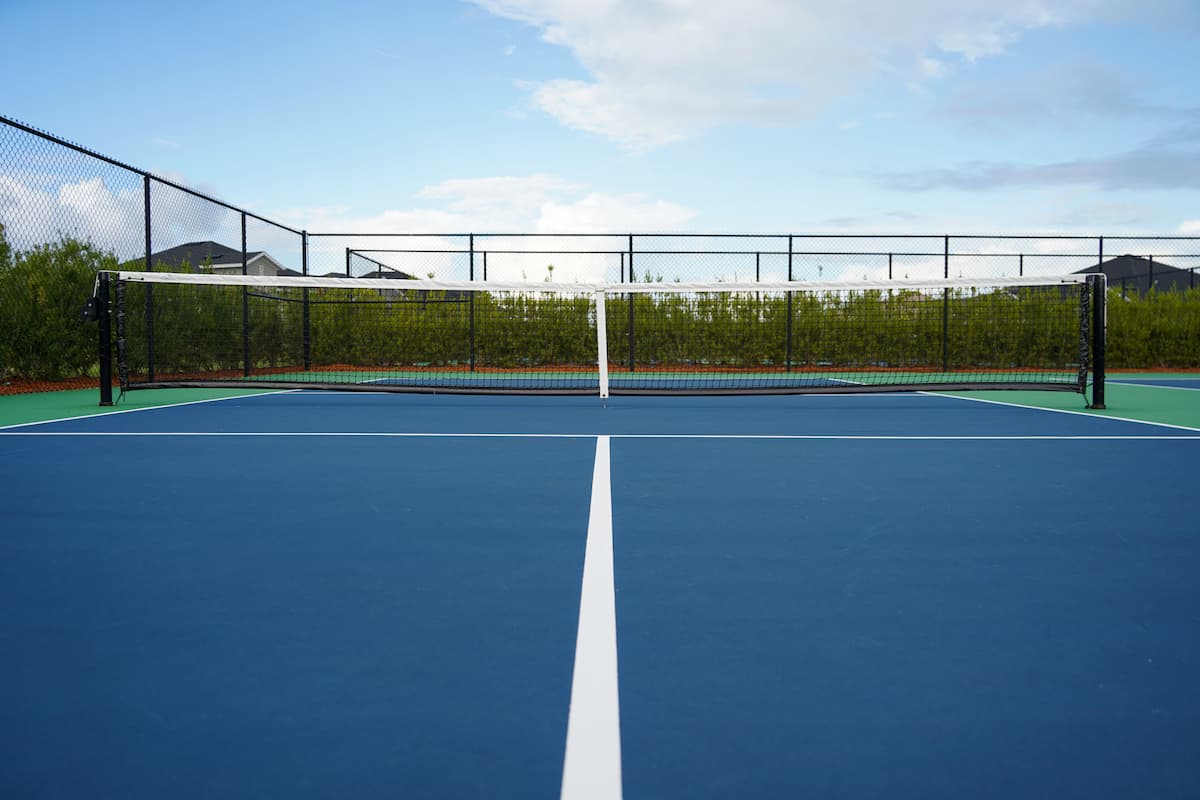Pickleball is an increasingly popular sport that combines elements from tennis, badminton, and table tennis.
With more people engaging in this exciting activity, it’s crucial to understand the basics of pickleball court dimensions.
This article will guide you through the different aspects of a pickleball court – discussing its size, layout, and markings.
By the end, you’ll have a solid understanding of what constitutes a correctly laid-out court. So let’s dive into the world of pickleball court dimensions.
Pickleball Court Size: A Spacious Playing Area
One of the first things to understand about pickleball is the size of the court. In terms of length and width, a standard pickleball court measures 44 feet by 20 feet.
This arrangement provides ample space for various playing styles and strategies while not being too large for beginners to enjoy learning the game.
The court dimensions are also suitable for both singles and doubles play, ensuring a versatile playing environment for all levels of expertise.
A Comparison with Tennis and Badminton Courts
In comparison to other racquet sports, pickleball courts have a unique size. For instance, a tennis court measures 78 feet by 27 feet for singles and 78 feet by 36 feet for doubles.
On the other hand, a standard badminton court measures around 44 feet by 17 feet for singles and 44 feet by 20 feet for doubles.
Therefore, we can observe that a pickleball court occupies a smaller area than a tennis court but is slightly larger than a badminton court.
Court Layout: Understanding Lines and Zones
Beyond their overall sizes, pickleball courts feature specific lines and zones that dictate where players can move and hit the ball.
Knowing these areas is essential for properly participating in the game and determining a winning strategy. The main elements to take note of are:
- Baseline: Located at each end of the court, the baseline is a line that stretches from one sideline to the other. Players start behind the baseline when serving or returning.
- Sidelines: These two lines mark the width of the pickleball court. They delineate the boundaries for both singles and doubles play and help determine whether a ball lands in or out of bounds.
- Non-volley zone (NVZ): Commonly referred to as “the kitchen,” this 7-foot-wide area extends from the net towards the back of the court on both sides. Players may not volley the ball – that is, hit it mid-air before it bounces – within this zone, so strategic positioning around the NVZ becomes an essential aspect of gameplay.
- Centerline: This vertical line runs down the center of the court, dividing it into two equal halves. Unlike tennis, there is no need for separate service boxes since pickleball uses diagonal serves into the opponent’s adjacent court half.
A Closer Look: Non-Volley Zone Rules
The non-volley zone represents one of the most crucial parts of pickleball court dimensions. As mentioned earlier, players must refrain from volleying while standing in this zone. If they do so, they commit a fault, resulting in a point loss or surrender of the serve.
Additionally, touching any part of the NVZ line with your foot or paddle while executing a volley also results in a fault. Some advanced tactics include “dinking” – hitting a soft shot just over the net, typically landing within the opponent’s NVZ – to draw your opponent out of position.
Pickleball Court Markings: Clear and Distinct Lines
For an effective and enjoyable game experience, having proper court markings is crucial. These are typically painted, taped, or even chalked lines that delineate the various areas mentioned above. To ensure accurate measurements and a professional appearance, it’s essential to follow specific guidelines for marking pickleball courts:
- Line Width: Lines should be no more than 2 inches wide and must be clearly visible at a distance. It’s important to use non-slippery materials for indoor courts as slippery lines can cause injuries.
- Color Contrast: Use colors that contrast sharply with the court surface to create clear boundaries. For example, white lines on blue or green surfaces ensure easy visibility during gameplay.
- Straightness and Sharpness: Lines must be straight and precisely meet at corners to avoid confusion about area divisions. Additionally, all intersections must be sharp and well-defined to prevent disputes during play.
Marking Temporary Pickleball Courts
In some cases, temporary pickleball courts are set up, particularly in multi-purpose gyms or recreational centers without dedicated pickleball facilities.
In these situations, removable tape, masking tape, or sidewalk chalk can serve as reasonable alternatives for permanent court markings.
The color contrast and line visibility factors remain essential even in temporary court setups, as they impact the quality of gameplay and overall player satisfaction.
In Conclusion
Now that you have learned about pickleball court dimensions, layout, and markings, you can confidently engage in this fascinating sport.
Whether you’re a casual player or aspiring pro, understanding pickleball court specifications will inspire you to appreciate the game, develop your strategies, and enjoy an exciting playing environment.

